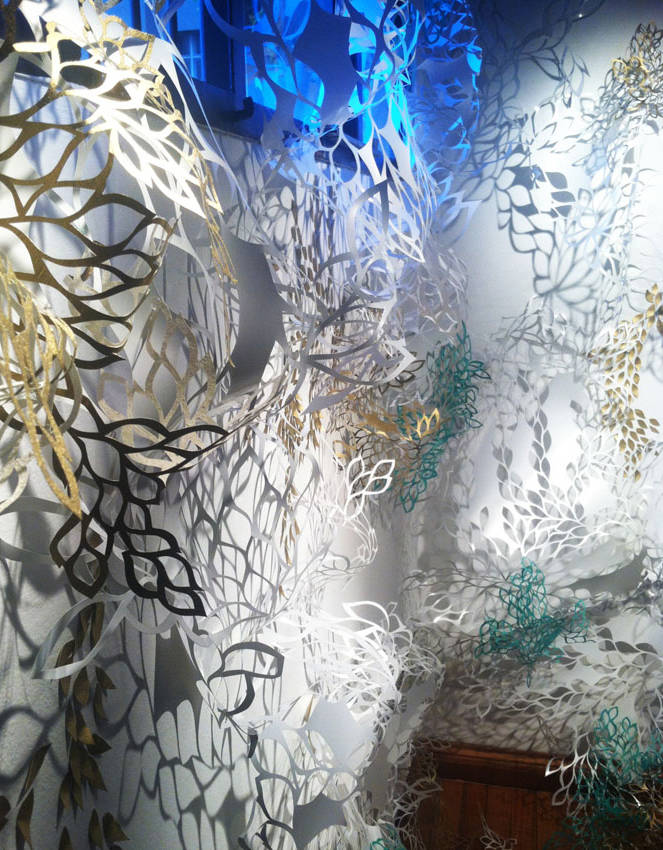Alicia Kelly, a paper artist from Lawrence, Kansas, has spent the month of April in Homer as Bunnell Street Art Center’s Artist in Residence. During her residency she held a series of workshops to help create a community art project that “will create experimental 3D paper designs that hold the essence of Homer,” as she described it.
In a reception and potluck from 5-7 p.m. today at Bunnell, the gallery shows the community paperwork. At the reception, Kelly will go over some of the process of how it came about, what some of the ideas were that inspired it and the role of the design workshops.
At an opening talk on April 5, Kelly shared the type of work she participates in and what she was intending to facilitate in a Homer community project.
In her talk, Kelly began by discussing some of her practices. The materials she uses include banner paper and unprinted Tyvek.
“An X-acto knife is the main tool, for precision,” she said. “I don’t do any laser cutting. I cut everything by hand. It illustrates my energy better.”
In terms of visual features of influential significance, “shadow is a really important part of my work,” Kelly said. She described the imagery in big, playful words: “I like to be spontaneous and ephemeral — like playing with leaves. It’s OK if something falls apart. It can become something new.”
Paper is with her always.
“I live in a sense of paper navigation,” she said. “I travel and take my paper with me. I take it out and play with it wherever I am.”
Kelly also noted how “space and place in the structured scene is important; all of the language of patterns with the paper is important.”
In the first two weekends of April, Kelly held a design workshop series. The workshops were organized for community members to help imagine, connect and co-create a three dimensional paper installation that is now available on display at Bunnell. In the first workshop, there were approximately 10 attendees of all ages. Kelly began by posing these questions (and a few more) for the participants to consider and brainstorm:
• What are the places you remember/love most about Homer?
• What are the hidden gems or places you love to visit?
• What history of Homer is most inspiring to you?
• What does Homer smell like? Taste? Feel?
• What kind of art shows/public art have you experienced that is significant to you?
• What is unique about the creative scene in Homer?
• Who are some of your favorite local artists? Why?
“Natural patterns are some of the easiest to reproduce,” she told the workshop participants. “Think about the things you see daily and what might present an essence of Homer, through patterns.”
Some of the things that emerged in conversation with the participants included tide pools and the general influence of tides, fireweed, barnacles, and nautical charts — there was more depending on the personality of the participants involved.
As Kelly later said in an interview, “In terms of trying to represent a whole community — that’s difficult, especially in abstract format.”
One of her goals as a facilitator for workshops like this is to help the participants express themselves, to find the right questions to ask about visualizing the final product.
“We talk a lot about representation,” she said. “For example, how do we represent water here? What kind of patterns, pleating and templates will we be able to use to share our creative intentions?”
When discussing some of her concluding thoughts on the residency in Homer, Kelly said, “I learned a lot about what kind of residencies I will look for in the future. What I found here solidifies exactly what I want: small towns, good views, outside activities. I like the intimacy a place this size provides and contributes to.”
She compared her Homer stay to a two-month residency she did in 2014 in Buenos Aries, Argentina.
“I loved it there, but there were only so many people you could meet” she said. “I think I will look into smaller places again in the future.”


